Like and even more than the other absolute rulers of the Old Regime, the Medici wanted to scatter their territory with images that represented them as the unchallenged rulers of a finally united and pacified Tuscany. Simple busts, but also solemn full-length simulacra and, in some cases, equestrian monuments populated the streets and squares of Florence, first and foremost, and the other centers of the region. Particularly engaged in this propagandistic work was Grand Duke Ferdinand I: in 1587 the sovereign commissioned Giambologna to create the equestrian monument of his father Cosimo I, which stands in Piazza della Signoria, and a few years later, in 1602, he requested Giambologna himself for his own bronze equestrian monument, which towers in the center of Piazza della Santissima Annunziata, also in Florence. Between these two dates, Ferdinand had Pietro Francavilla (Pierre de Franqueville; Cambrai, 1548 circa Paris, 1616), based on Giambologna’s design, create the marble statue of Cosimo in the Pisan Piazza dei Cavalieri (1596) and his own effigies, also in marble, which we find again in Pisa, in Piazza Carrara (1594), and in Arezzo, on the Piazza del Duomo (1595).
The grand duke could not neglect Livorno, the modern port center that constituted Tuscany’s main outlook on the Mediterranean and the privileged entrance to the grand duchy from the sea. Thus, in 1595, a further, colossal marble statue depicting the sovereign was commissioned, this time from the Florentine sculptor Giovanni Bandini (Florence, 1540 circa 1599), who completed it in the year of his death. The sculpture, worked in Carrara, arrived in Livorno two years later, in 1601, but it was not erected immediately: on the contrary, the statue waited a good 16 years, lying down and covered, for the moment of its erection. This time it would not be the usual statue elevated on a plinth, but a more articulated monument, with four figures of Muslim prisoners placed around the base, at its corners. The intent was to magnify Grand Duke Ferdinand as Grand Master of the Order ofthe Knights of St. Stephen, whose cross stands out on the armor of the statue sculpted by Bandini.
THE ORDER, established by Cosimo I in 1561, was intended to counter the frequent barbarian raids in the northern Tyrrhenian Sea; its headquarters were in Pisa, in the Palazzo della Carovana (which now houses the Scuola Normale Superiore), and its ships were stationed in the port of Livorno, where, near the dock, the new monument to Ferdinand would be erected. In the figures at the base of the monument were to be eternalized (in bronze, not in the marble of the grand duke’s statue and plinth) the prisoners who were often captured and enslaved by the Knights in the course of naval battles or raids on the coast of North Africa (just as Christian men and women were taken by the Turks in their raids and enslaved). The bronze prisoners were meant to display the power of the Order and the Grand Duchy: their function was similar to that of the flags and banners taken from the enemy that are still displayed as war trophies in the church of Santo Stefano dei Cavalieri, in Pisa.
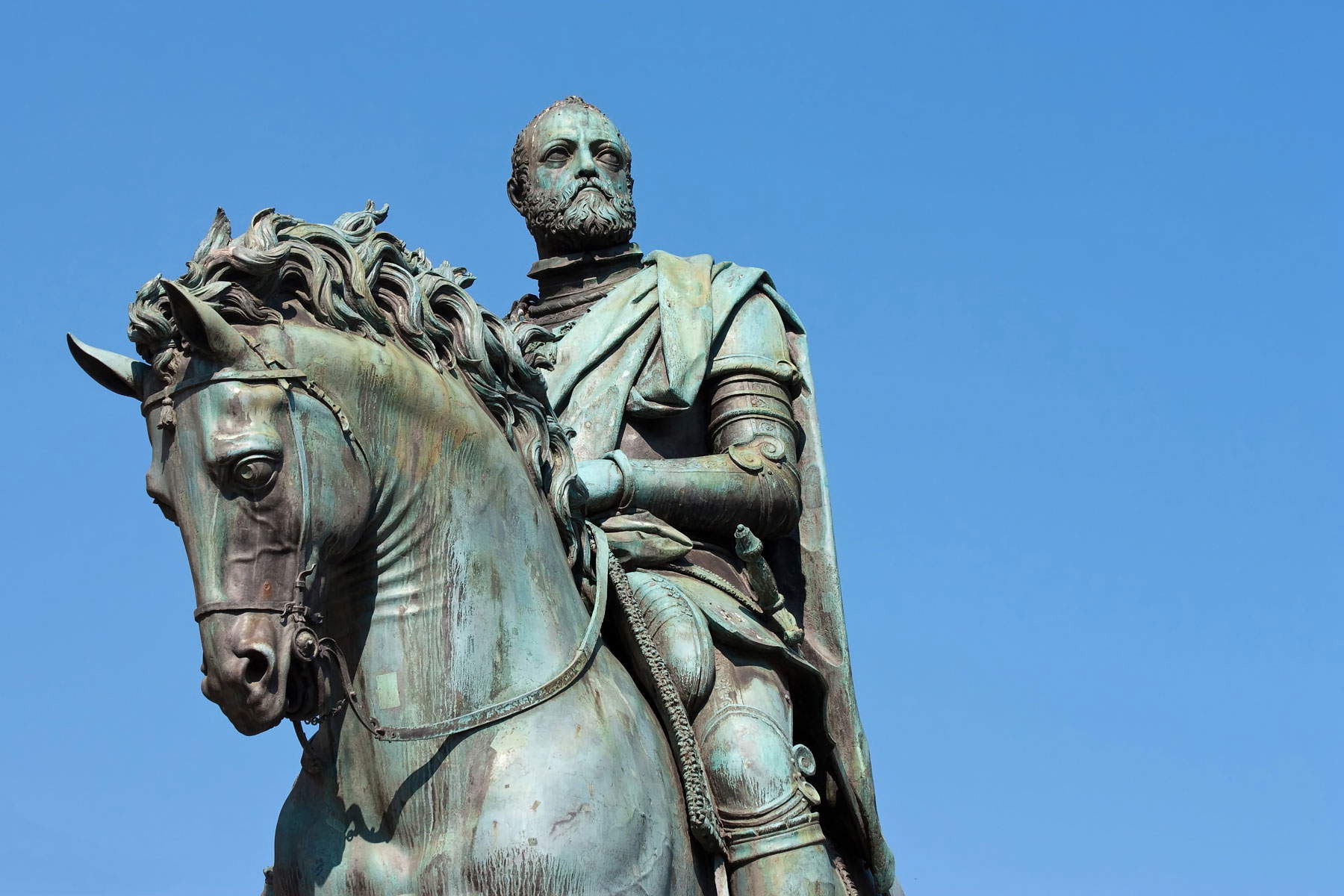
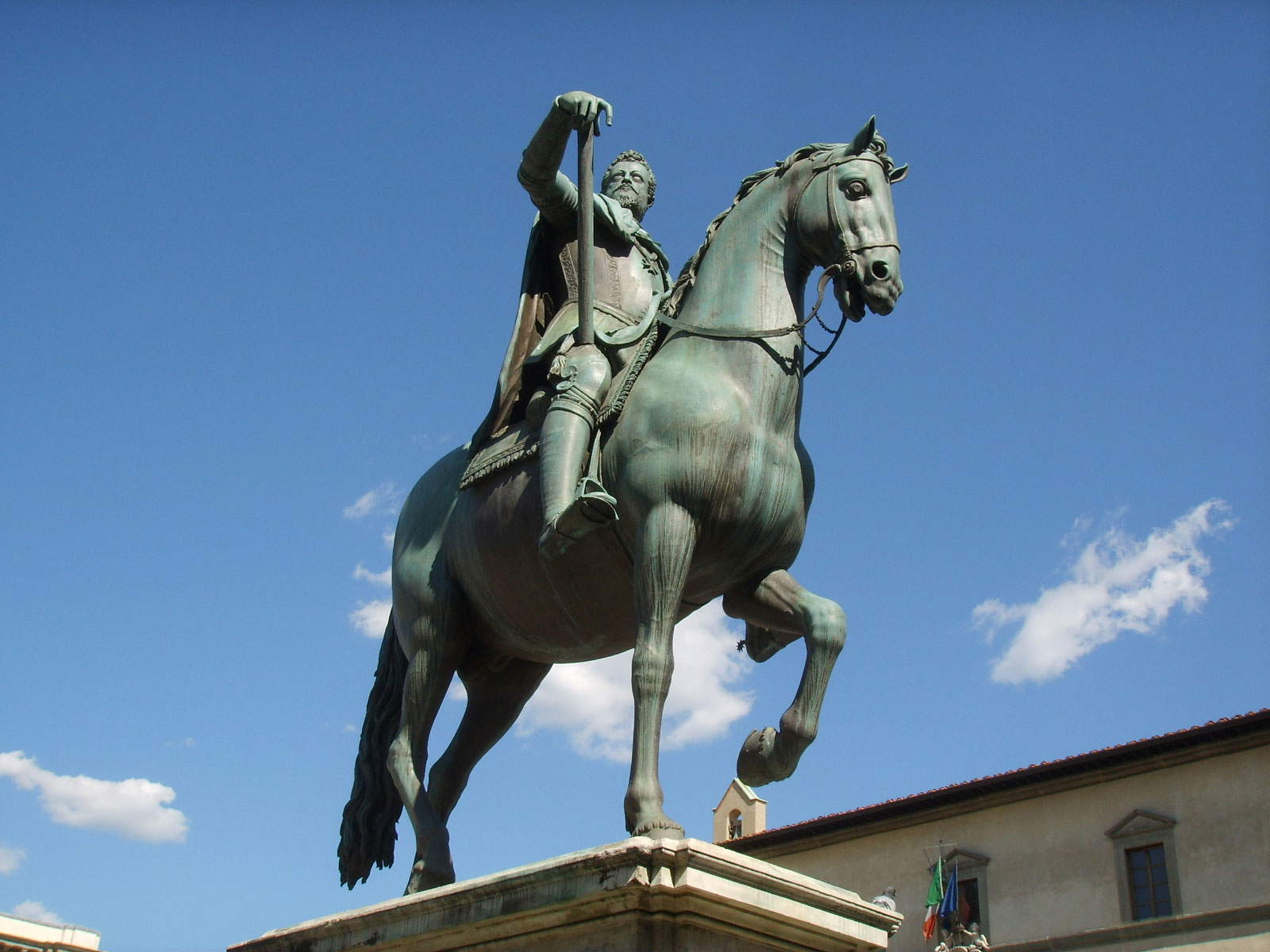
Probably already Grand Duke Ferdinand had the idea of adding four “Moors” in chains to his own effigy. Work on the sculptures, however, began under his successor, Cosimo II: around 1615-1616 the sovereign entrusted the task of their realization to the leading sculptor active on the Florentine scene, Pietro Tacca (Carrara, 1577 Florence, 1640) from Carrara; in the meantime, the base was built and the statue of Bandini was placed on it, raised on May 29, 1617. Pietro Tacca represents not only one of the greatest sculptors of Carrara origin, if not the greatest ever, but also a striking paradox. A native of a land that for centuries has been identified with the quarrying, working and trade of the snow-white marble of the Apuan Alps, Tacca owes his fame to bronze sculpture (marble has absolutely secondary importance in the artist’s production). His conversion from stone to metal came shortly after his arrival in Florence in 1592 and his entry into Giambologna’s workshop. The multifaceted Flemish sculptor had rehabilitated and renewed bronze sculpture in the Florentine sphere, both with large statues and highly sought-after small bronzes, after the magisterium of Michelangelo, proponent of a sculpture “by way of levare” that aimed to free the figure imprisoned within the stone block, had marked the triumph of marble statuary. It was from Giambologna that Pietro’s artistic journey took off, and he quickly became the sculptor’s principal collaborator and then upon his death in 1608 inherited his studio in Borgo Pinti. Tacca ferries the master’s virtuosity and sophisticated elegance well into the seventeenth century, accentuating on the one hand his refinement and taste for the bizarre and monstrous (as evidenced in particular by the twin fountains in Florence’s Piazza della Santissima Annunziata, 1627-1630, originally intended for Leghorn) and opening on the other hand to a majestic naturalism, exemplified in particular by the Four Moors, that parallels the coeval outcomes of sculptural research in other centers, beginning with Rome. And by now baroque, in its dynamism and quest for wonder, can be said to be the latest fruit of Tacca’s activity, the equestrian monument to Spain’s King Philip IV in Madrid (1634-1640), in which, for the first time, the horse is depicted standing upright on its hind legs.
In approaching the work for the Leghorn monument to Grand Duke Ferdinand, Tacca was confronting a long tradition of depictions of prisoners in celebratory monuments, from Roman art to Michelangelo’s Slaves and Prisons. But decisive above all was an example from a few years earlier, which Tacca knew well, having collaborated on it as Giambologna’s assistant: the equestrian monument of Henry IV on the Pont Neuf in Paris, the base of which featured four bronze prisoners at its corners. The work was the result of a team effort: the overall design of the monument was the responsibility of the painter Ludovico Cardi known as il C igoli (Cigoli di San Miniato, 1559 Rome, 1613), while the horse and rider were executed, as mentioned, by the Giambologna-Tacca pairing; the prisoners were made by Pietro Francavilla, assisted by his son-in-law Francesco Bordoni (Florence, 1580 Paris, 1654). The Parisian monument was destroyed at the time of the French Revolution; only a few fragments of the main group and the four figures of the prisoners were saved (Louvre Museum). So the idea behind Tacca’s masterpiece was perhaps not new (but it is not easy to establish the order of precedence between the Parisian and Livorno monuments, especially if we accept a start of the design of the Livorno work, as some documents suggest, as early as 1607-1608).
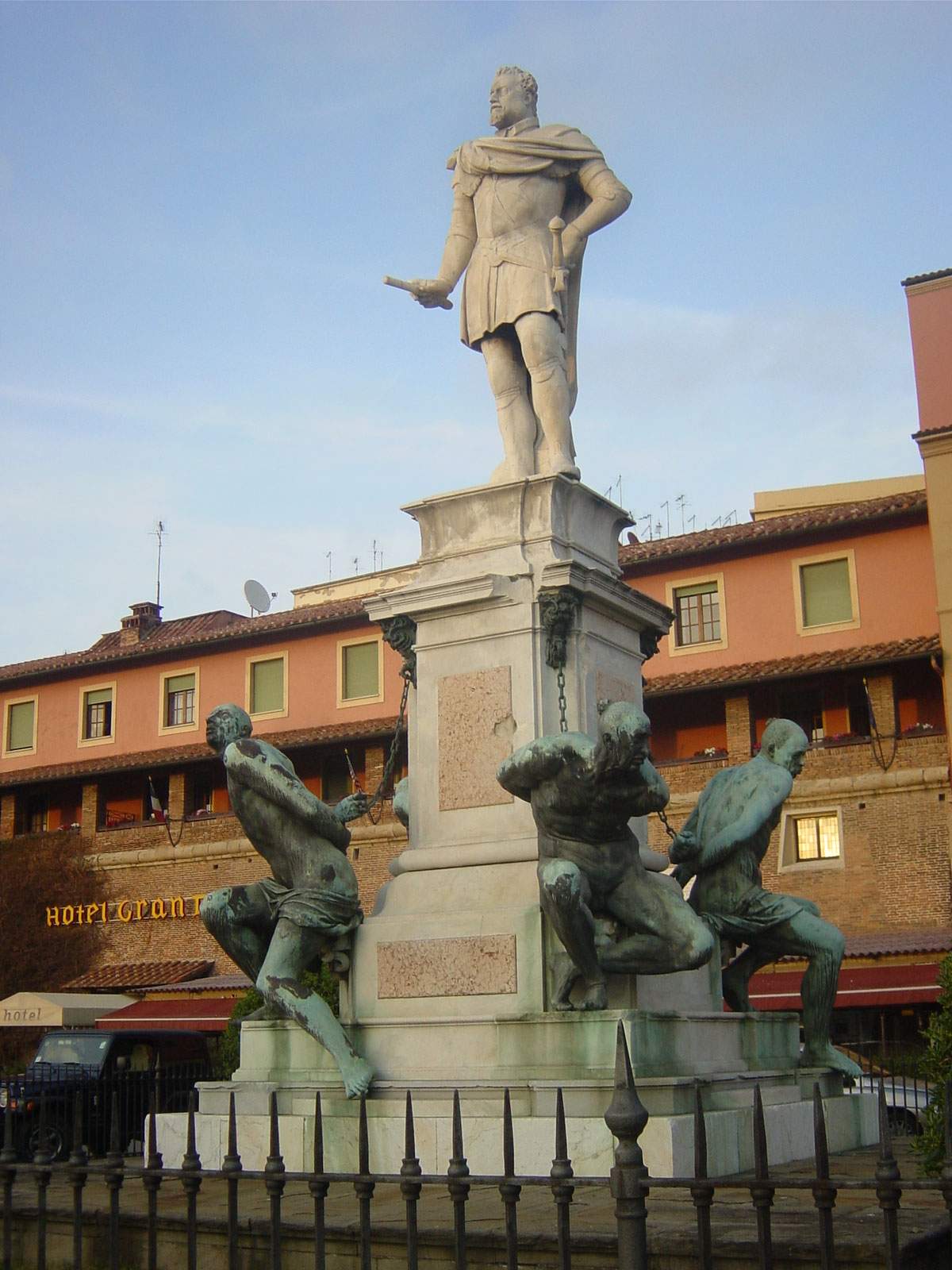
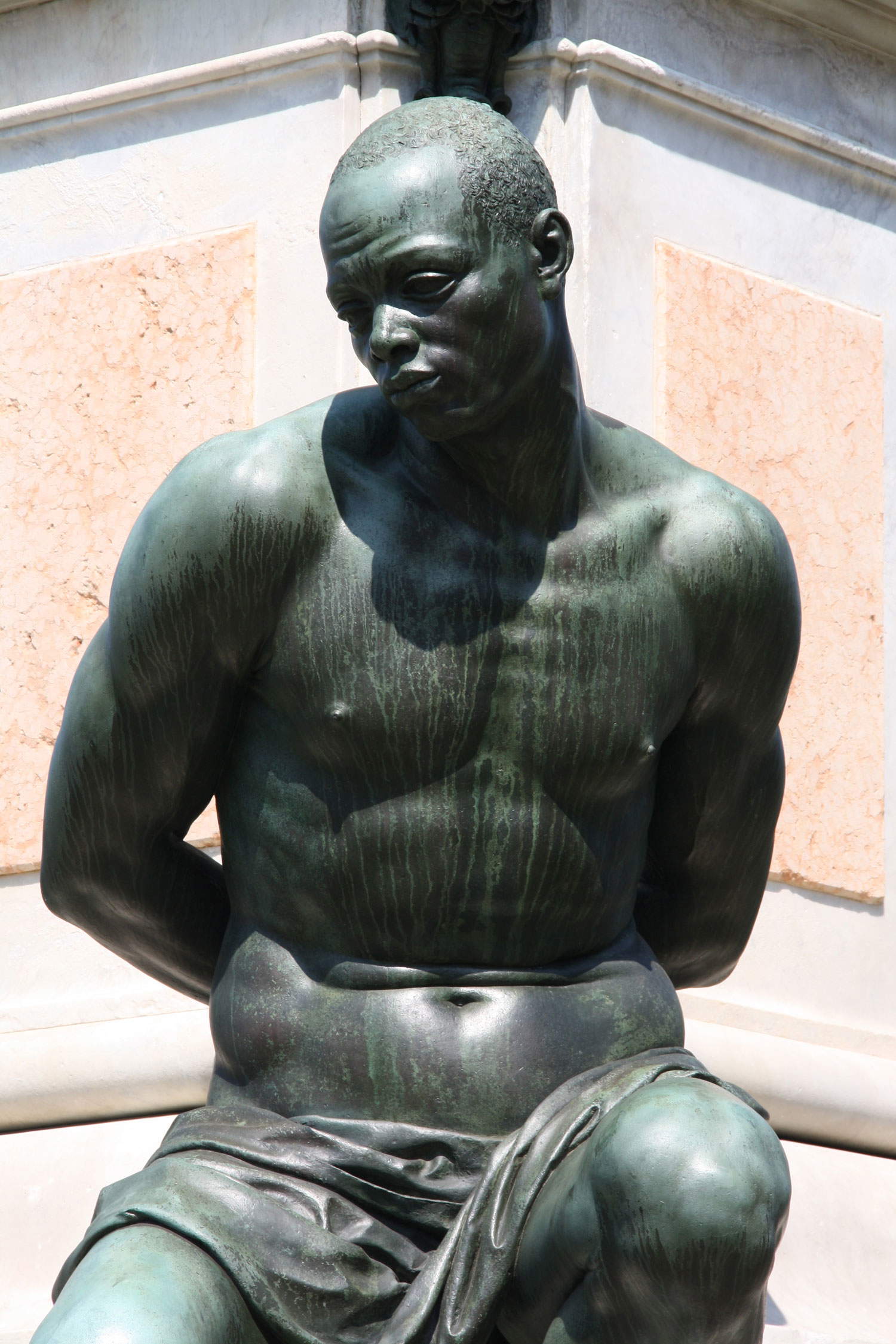


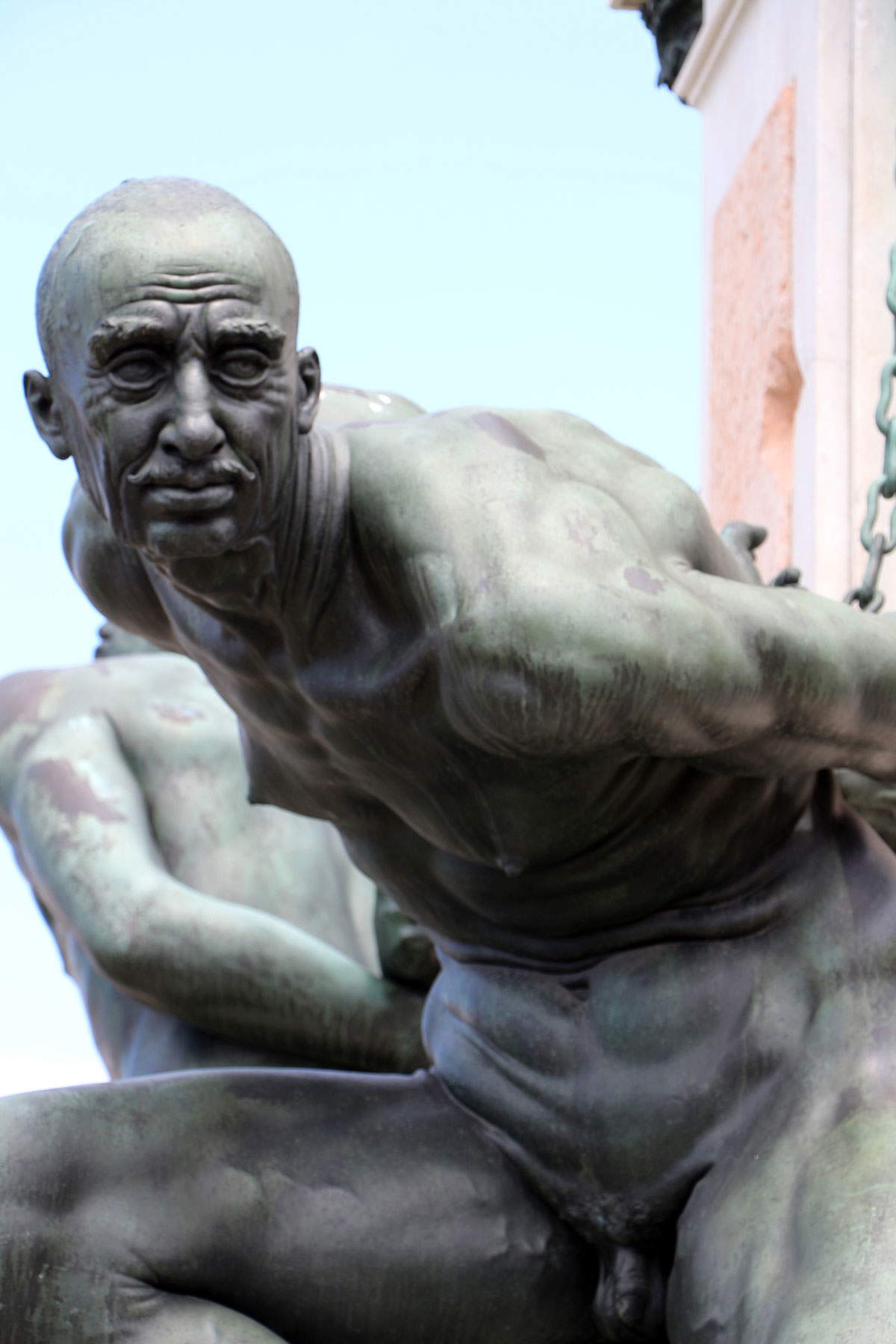
In any case, the artist surpassed Francavilla’s model and angular figures by leaps and bounds: his “slaves” (as they are usually referred to in the sources of the time) are monumental figures that, although chained to the base, take possession of the space that surrounds them, through carefully calibrated poses and twists, in a continuous play of references and variations, mindful, in particular, of Michelangelo. Tacca combined the careful study of models and tradition with inspiration from the natural datum; hence he studied from life real Turkish prisoners, held and enslaved in the grand ducal prisons of Livorno, known by the name of Bagno. The artist’s first biographer, Filippo Baldinucci, in his Notizie de professori del disegno, tells us how things went: “[ ] he applied himself to such distinguished work and had begun great studies of it; but the greatest was to take himself to Leghorn [...] there he had the faculty to make use of as many slaves as he had recognized with the most graceful muscles, and most suitable to limitation, to form a most perfect body, and many and many of them he formed in the most beautiful parts.” Already these words by Baldinucci are of extreme interest: first because of the appreciation that transpires from them, and from those that follow, for the appearance and physical prowess of the slaves (unusual at the time for people belonging to non-European ethnic groups); but above all because it provides us with valuable information about Tacca’s working method.
The sculptor is interested in drawing from various subjects their most beautiful parts in order to form “perfect bodies,” in deference to the theory of ideal beauty and selection from nature, exemplified by thepisode of the Greek painter Zeusis who, as Cicero and Pliny the Elder narrate, chose the best parts of various maidens of Croton to create the image of the beautiful Helen of Troy. In addition, Baldinucci tells us, Tacca “formed in the finest parts” many slaves: alluding to a practice that may seem strange to us, but which was not at all unusual at the time, that of forming directly on the bodies, by means of wax, casts from which would be taken the molds to be used in casting (or rather, in this case, since they were statues of much larger size than life, casts that would then be enlarged to create the molds). No less interesting is what Baldinucci then adds: “One of these was a Turkish Moorish slave, who was called by nickname Morgiano, who by size of person, and by features dogni his part was beautiful, and was of great help to Tacca in conducting the beautiful figure, with his natural effigy, which we see today. And I, who such things I write, in the time of my childhood in the age of ten years saw it, and knew it, and talked with it not without taste, though in so littleness, in recognizing, that I did in comparison of the portrait, the beautiful original.” Tacca thus formed different parts of the beautiful body, as well as the face, of a “Moorish Turkish” slave nicknamed Morgiano, whose features are to be recognized in those of the prisoner in the southeast corner of the base, the young man who turns down a gaze full of sadness and melancholy and the only one actually “Moorish” of the four, that is, a black-skinned African (while the other three look Turkish or Maghrebi).
From the eighteenth-century Chronicle of Livorno by Mariano Santelli we learn the name of another model of Tacca: “a sturdy old man, called Ali,” on whom the figure with thick mustachios in the southwestern corner was modeled. A list of slaves present in the Bath during the years Tacca went there, recently unearthed by American art historian Steven Ostrow, confirms that this information is true: among the slaves we find “Margian [son] of Macamutto, of Tangiur [Tangier], aged 25, to be sold,” and several Ali, originally from Turkey. Poor Morgian was probably already a slave with the Turks, and must have been captured by the Ottomans in Sudan or by the Moroccans in West Africa. The news provided by Baldinucci and Santelli and the related documentary confirmation thus confront us with a fact of epochal significance: those of Morgiano and Ali are the first identifiable sculpted portraits of slaves in the history of Western art. Two bronze captives were placed at the base of the monument in 1623, two more three years later. An additional bronze element, a trophy of Ottoman arms and flags placed at the grand duke’s feet, was not installed until 1638, and was lost, because it was melted down, in 1799, at the time of the French occupation of Livorno. Fortunately, the Moors, as representations of oppressed peoples, were spared; the statue of the grand duke was taken down from its pedestal, and returned to it during the Restoration. In 1888 the monument was moved some 20 meters from its original location, still remaining close to the Labronian harbor and a short distance from the sea. Lopera experienced considerable fortune from its creation, and was hailed as Tacca’s masterpiece.
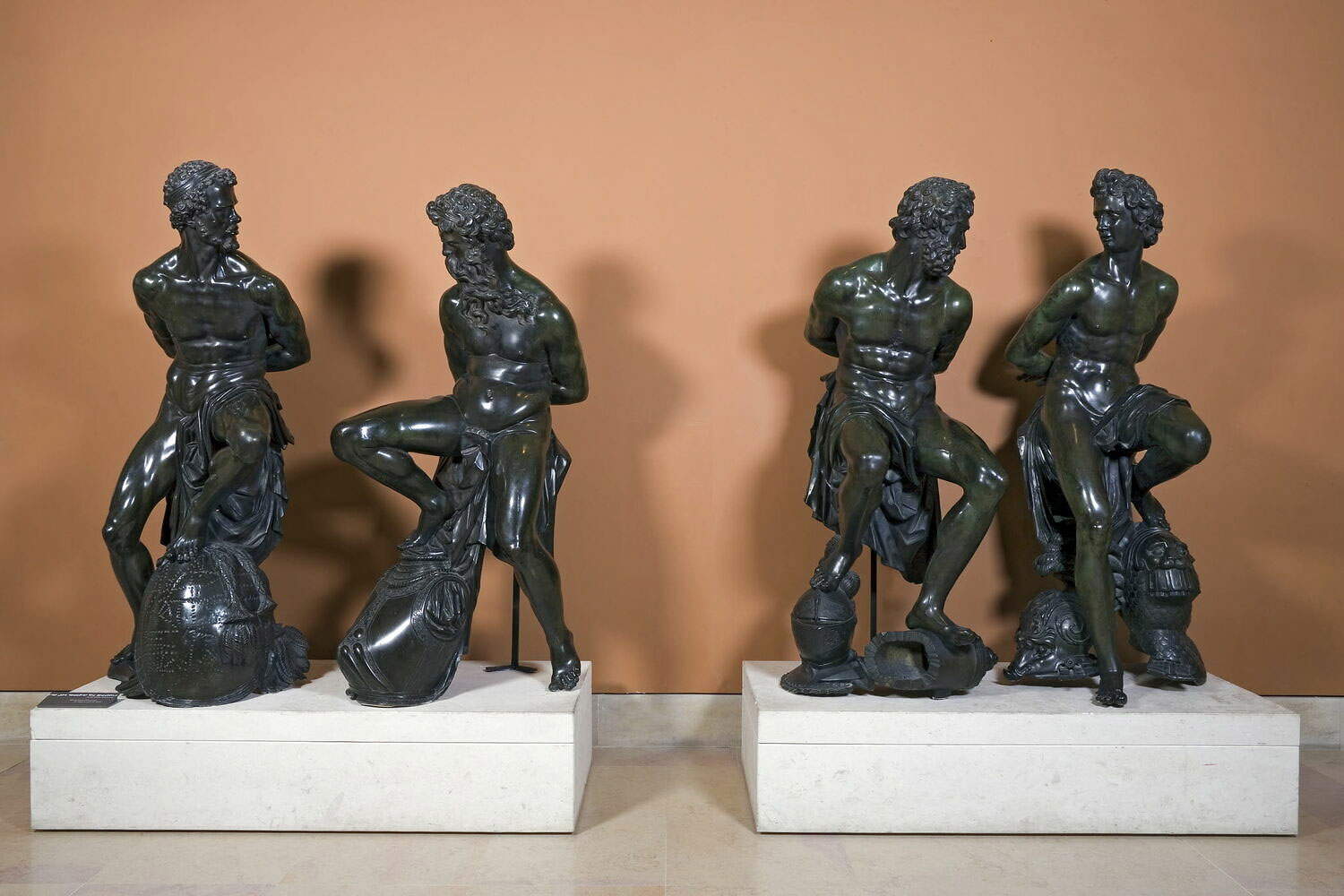

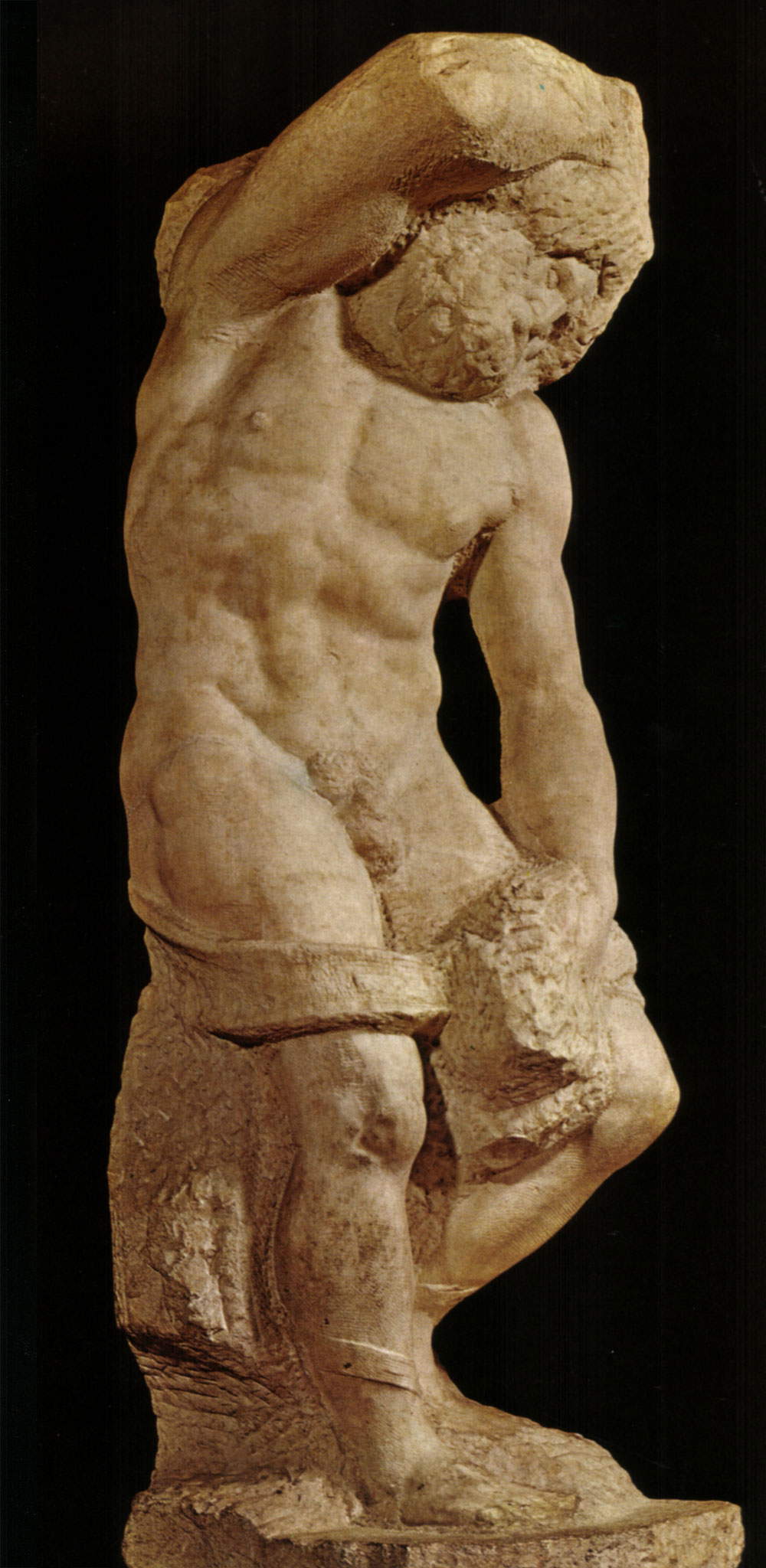

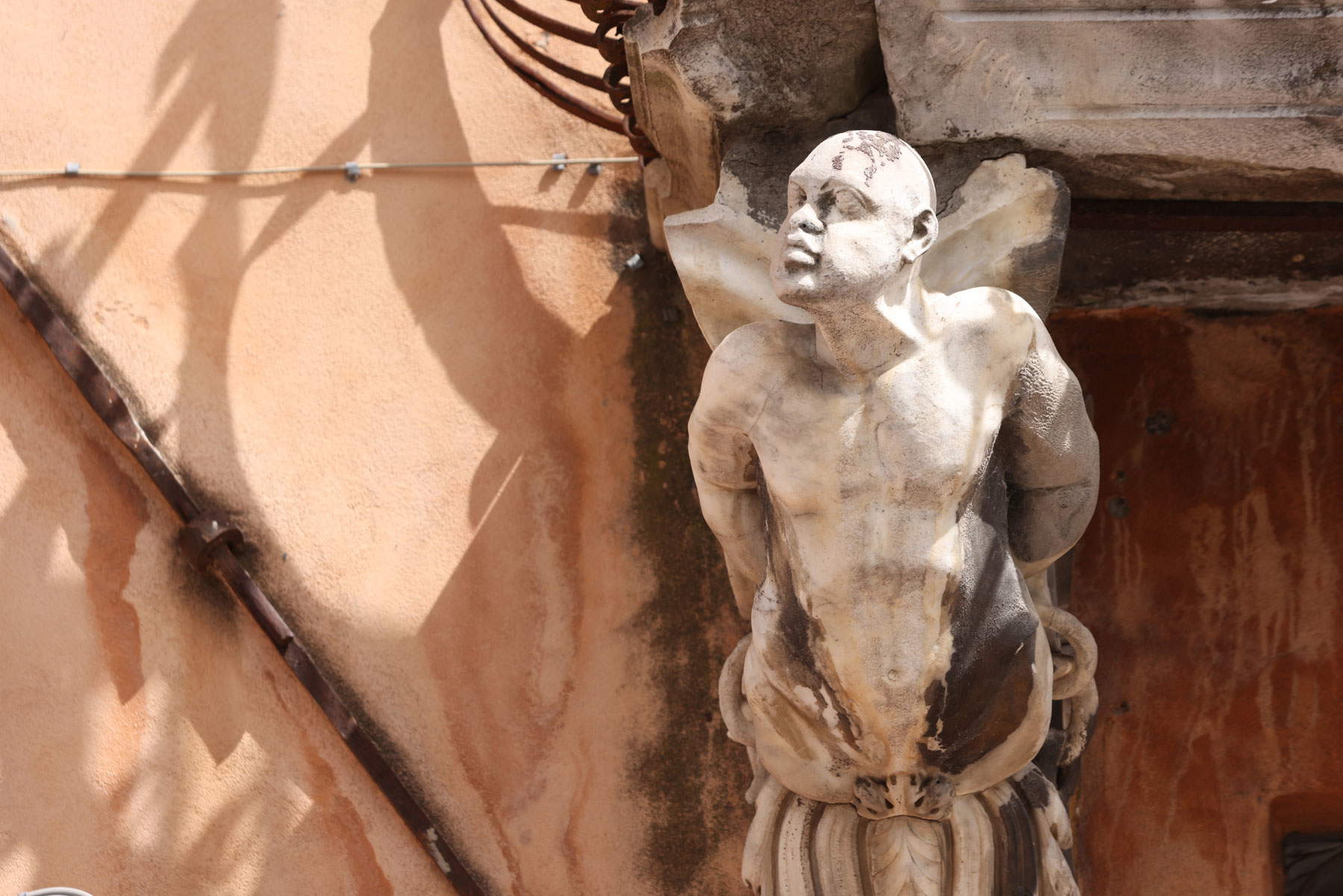
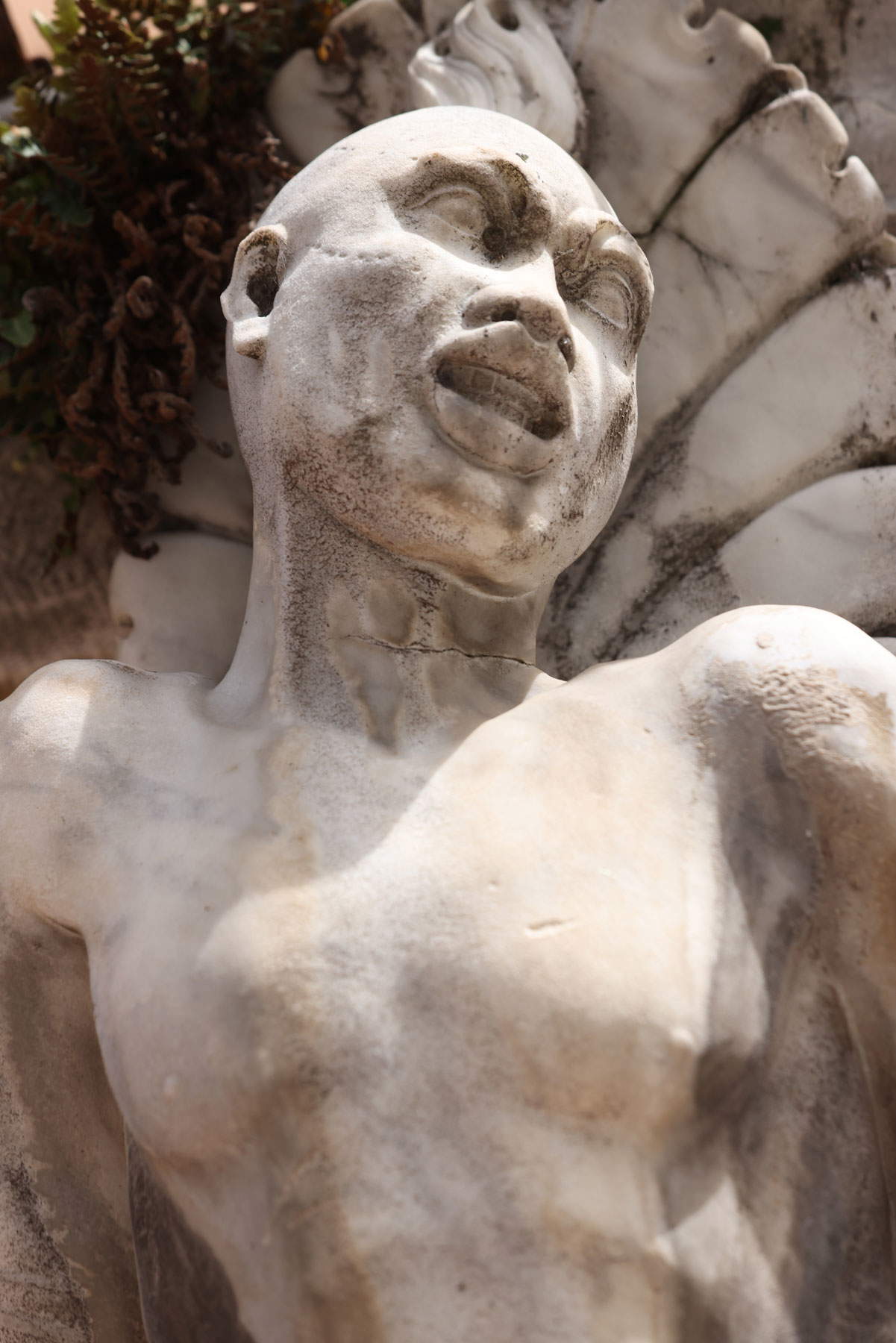

In his own hometown, the statue depicting him, sculpted by Carlo Fontana and placed in front of the Academy of Fine Arts in 1900, echoes the pose of the Moors: the artist, with a bohemian air, is seated and has his hands behind his back. But in Carrara there is also another homage to Livorno sculptures, much earlier: on Via Carriona, at the Baroncino Bridge, three 18th-century telamons supporting a balcony are inspired by the “slaves” of Livorno, as their shaved heads and arms chained behind their backs certify. This was enough for these marble sculptures to be traditionally attributed to Tacca himself. The monument to Ferdinand I is not only a masterpiece to be admired, it is also a problematic work, one that gives us food for thought and reflection, and indeed may cause us some discomfort. This is undoubtedly a condition shared by many celebratory monuments that have come down to us from the past: their exaltation of absolute power is as far removed from our values of democracy, freedom, tolerance.
Here, however, there is more: overpowering and imprisonment are visualized, moreover with a differentiation, by ethnicity and religion, between those who triumph above and those who suffer in chains at the bottom that cannot fail to instill disquiet in the relative. A monument that may appear uncomfortable, in these times when the confrontation between the Islamic world and the West has experienced such harshness as to conjure up the ghost of the "clash of civilizations," and when the Black Lives Matter movement has pointed its finger at monuments to figures accused of racism or linked to the slave trade. Helping to reconcile us with the monument is Tacca's art: his slaves are people. They are not stereotypical figures but, as we have seen, individuals, each one different from the other. Victors whose beauty, however, is recognized and exalted, whose vigor is conveyed. Defeated who endure captivity and suffering with silent dignity.
Warning: the translation into English of the original Italian article was created using automatic tools. We undertake to review all articles, but we do not guarantee the total absence of inaccuracies in the translation due to the program. You can find the original by clicking on the ITA button. If you find any mistake,please contact us.